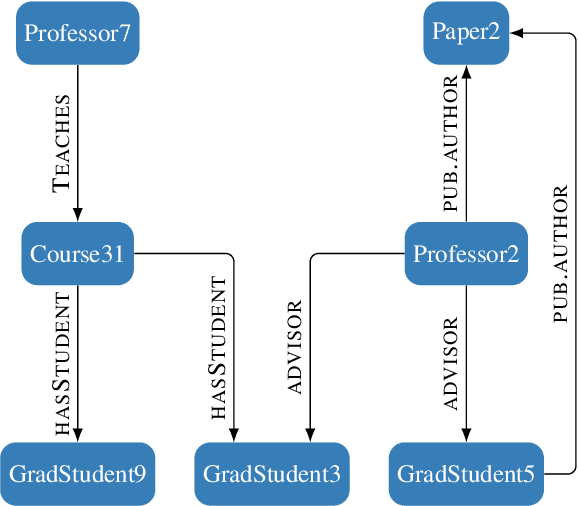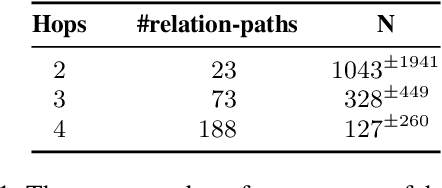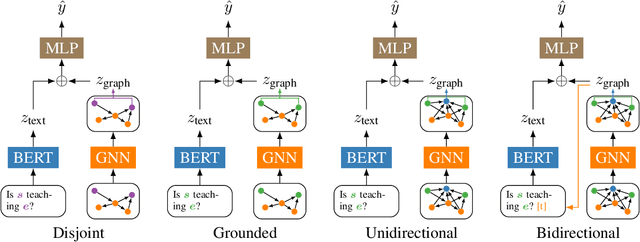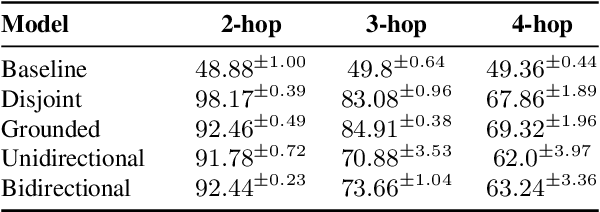Erik Velldal
NorEval: A Norwegian Language Understanding and Generation Evaluation Benchmark
Apr 10, 2025Abstract:This paper introduces NorEval, a new and comprehensive evaluation suite for large-scale standardized benchmarking of Norwegian generative language models (LMs). NorEval consists of 24 high-quality human-created datasets -- of which five are created from scratch. In contrast to existing benchmarks for Norwegian, NorEval covers a broad spectrum of task categories targeting Norwegian language understanding and generation, establishes human baselines, and focuses on both of the official written standards of the Norwegian language: Bokm{\aa}l and Nynorsk. All our datasets and a collection of over 100 human-written prompts are integrated into LM Evaluation Harness, ensuring flexible and reproducible evaluation. We describe the NorEval design and present the results of benchmarking 19 open-source pre-trained and instruction-tuned LMs for Norwegian in various scenarios. Our benchmark, evaluation framework, and annotation materials are publicly available.
Mixed Feelings: Cross-Domain Sentiment Classification of Patient Feedback
Jan 31, 2025Abstract:Sentiment analysis of patient feedback from the public health domain can aid decision makers in evaluating the provided services. The current paper focuses on free-text comments in patient surveys about general practitioners and psychiatric healthcare, annotated with four sentence-level polarity classes -- positive, negative, mixed and neutral -- while also attempting to alleviate data scarcity by leveraging general-domain sources in the form of reviews. For several different architectures, we compare in-domain and out-of-domain effects, as well as the effects of training joint multi-domain models.
A Collection of Question Answering Datasets for Norwegian
Jan 19, 2025Abstract:This paper introduces a new suite of question answering datasets for Norwegian; NorOpenBookQA, NorCommonSenseQA, NorTruthfulQA, and NRK-Quiz-QA. The data covers a wide range of skills and knowledge domains, including world knowledge, commonsense reasoning, truthfulness, and knowledge about Norway. Covering both of the written standards of Norwegian - Bokm{\aa}l and Nynorsk - our datasets comprise over 10k question-answer pairs, created by native speakers. We detail our dataset creation approach and present the results of evaluating 11 language models (LMs) in zero- and few-shot regimes. Most LMs perform better in Bokm{\aa}l than Nynorsk, struggle most with commonsense reasoning, and are often untruthful in generating answers to questions. All our datasets and annotation materials are publicly available.
Benchmarking Abstractive Summarisation: A Dataset of Human-authored Summaries of Norwegian News Articles
Jan 13, 2025Abstract:We introduce a dataset of high-quality human-authored summaries of news articles in Norwegian. The dataset is intended for benchmarking the abstractive summarisation capabilities of generative language models. Each document in the dataset is provided with three different candidate gold-standard summaries written by native Norwegian speakers, and all summaries are provided in both of the written variants of Norwegian -- Bokm{\aa}l and Nynorsk. The paper describes details on the data creation effort as well as an evaluation of existing open LLMs for Norwegian on the dataset. We also provide insights from a manual human evaluation, comparing human-authored to model-generated summaries. Our results indicate that the dataset provides a challenging LLM benchmark for Norwegian summarisation capabilities
The Impact of Copyrighted Material on Large Language Models: A Norwegian Perspective
Dec 12, 2024



Abstract:The use of copyrighted materials in training generative language models raises critical legal and ethical questions. This paper presents a framework for and the results of empirically assessing the impact of copyrighted materials on the performance of large language models (LLMs) for Norwegian. We found that both books and newspapers contribute positively when the models are evaluated on a diverse set of Norwegian benchmarks, while fiction works possibly lead to decreased performance. Our experiments could inform the creation of a compensation scheme for authors whose works contribute to AI development.
Small Languages, Big Models: A Study of Continual Training on Languages of Norway
Dec 09, 2024



Abstract:Training large language models requires vast amounts of data, posing a challenge for less widely spoken languages like Norwegian and even more so for truly low-resource languages like S\'ami. To address this issue, we present a novel three-stage continual training approach. We also experiment with combining causal and masked language modeling to get more flexible models. Based on our findings, we train, evaluate, and openly release a new large generative language model for Norwegian Bokm\r{a}l, Nynorsk, and Northern S\'ami with 11.4 billion parameters: NorMistral-11B.
Entity-Level Sentiment: More than the Sum of Its Parts
Jul 04, 2024Abstract:In sentiment analysis of longer texts, there may be a variety of topics discussed, of entities mentioned, and of sentiments expressed regarding each entity. We find a lack of studies exploring how such texts express their sentiment towards each entity of interest, and how these sentiments can be modelled. In order to better understand how sentiment regarding persons and organizations (each entity in our scope) is expressed in longer texts, we have collected a dataset of expert annotations where the overall sentiment regarding each entity is identified, together with the sentence-level sentiment for these entities separately. We show that the reader's perceived sentiment regarding an entity often differs from an arithmetic aggregation of sentiments at the sentence level. Only 70\% of the positive and 55\% of the negative entities receive a correct overall sentiment label when we aggregate the (human-annotated) sentiment labels for the sentences where the entity is mentioned. Our dataset reveals the complexity of entity-specific sentiment in longer texts, and allows for more precise modelling and evaluation of such sentiment expressions.
Compositional Generalization with Grounded Language Models
Jun 07, 2024



Abstract:Grounded language models use external sources of information, such as knowledge graphs, to meet some of the general challenges associated with pre-training. By extending previous work on compositional generalization in semantic parsing, we allow for a controlled evaluation of the degree to which these models learn and generalize from patterns in knowledge graphs. We develop a procedure for generating natural language questions paired with knowledge graphs that targets different aspects of compositionality and further avoids grounding the language models in information already encoded implicitly in their weights. We evaluate existing methods for combining language models with knowledge graphs and find them to struggle with generalization to sequences of unseen lengths and to novel combinations of seen base components. While our experimental results provide some insight into the expressive power of these models, we hope our work and released datasets motivate future research on how to better combine language models with structured knowledge representations.
It's Difficult to be Neutral -- Human and LLM-based Sentiment Annotation of Patient Comments
Apr 29, 2024Abstract:Sentiment analysis is an important tool for aggregating patient voices, in order to provide targeted improvements in healthcare services. A prerequisite for this is the availability of in-domain data annotated for sentiment. This article documents an effort to add sentiment annotations to free-text comments in patient surveys collected by the Norwegian Institute of Public Health (NIPH). However, annotation can be a time-consuming and resource-intensive process, particularly when it requires domain expertise. We therefore also evaluate a possible alternative to human annotation, using large language models (LLMs) as annotators. We perform an extensive evaluation of the approach for two openly available pretrained LLMs for Norwegian, experimenting with different configurations of prompts and in-context learning, comparing their performance to human annotators. We find that even for zero-shot runs, models perform well above the baseline for binary sentiment, but still cannot compete with human annotators on the full dataset.
Text-To-KG Alignment: Comparing Current Methods on Classification Tasks
Jun 05, 2023Abstract:In contrast to large text corpora, knowledge graphs (KG) provide dense and structured representations of factual information. This makes them attractive for systems that supplement or ground the knowledge found in pre-trained language models with an external knowledge source. This has especially been the case for classification tasks, where recent work has focused on creating pipeline models that retrieve information from KGs like ConceptNet as additional context. Many of these models consist of multiple components, and although they differ in the number and nature of these parts, they all have in common that for some given text query, they attempt to identify and retrieve a relevant subgraph from the KG. Due to the noise and idiosyncrasies often found in KGs, it is not known how current methods compare to a scenario where the aligned subgraph is completely relevant to the query. In this work, we try to bridge this knowledge gap by reviewing current approaches to text-to-KG alignment and evaluating them on two datasets where manually created graphs are available, providing insights into the effectiveness of current methods.
 Add to Chrome
Add to Chrome Add to Firefox
Add to Firefox Add to Edge
Add to Edge